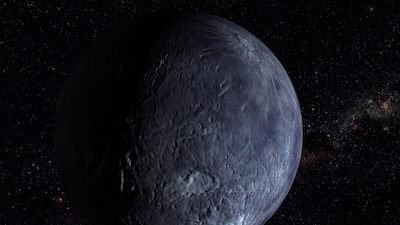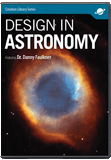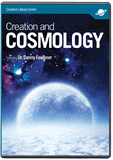
Is Pluto a Planet?
In 2006, the International Astronomical Union (IAU) voted to change Pluto’s classification as a planet.1 This move was controversial, especially by the general public that largely opposed the demotion of Pluto. For instance, there was a recent news report about revisiting this question.2
Why did astronomers decide to reclassify Pluto?
Why did astronomers decide to reclassify Pluto? The move was driven by several factors. The eight other planets easily fell into one of two groups, the terrestrial and Jovian planets. The terrestrial (meaning Earth-like) planets are the four innermost planets, and the Jovian (meaning Jupiter-like) planets are the four outermost planets. However, Pluto doesn’t fit into either group. Astronomers had long known that Pluto was far smaller than Mercury, the smallest planet if Pluto were excluded. Since 1992, astronomers have found more than 1,500 other objects orbiting the sun beyond Neptune and near Pluto’s orbit. Eris, discovered in 2005, is one of these, and it is slightly larger and more massive than Pluto. If Pluto is a planet, why isn’t Eris a planet? Many other objects orbiting the sun near Pluto are nearly as large as Pluto and Eris, so why aren’t they planets too?
A number of astronomers had favored this change for some time, but out of respect for Clyde Tombaugh, the discoverer of Pluto, this topic was not discussed much during his lifetime. Following Tombaugh’s death in 1997, astronomers increasingly began to reconsider the issue. This culminated in the IAU’s decision in 2006.
Complicating the issue was that there never was a standard definition for a planet, because until recently nearly everyone sort of knew what a planet was—a planet was a large object that orbited the sun. Objects that orbited the sun but were much smaller than planets were either asteroids or comets. However, recent discoveries have made the old distinctions less clear. For instance, the difference between asteroids and comets once was based upon composition, but now that difference is blurred. Perhaps the kind of orbit that a body has may be more significant in determining whether a small solar system object is an asteroid or a comet. And with the discovery of many large asteroids orbiting the sun near Pluto’s orbit, the question of how large a body must be to qualify as a planet came up. Ultimately, the IAU formally adopted a definition for a planet for the first time. According to that definition, a planet must meet three criteria:
- A planet must orbit the sun
- A planet must be spherical
- A planet must have significantly cleared its orbit of other objects
Since Pluto orbits the sun, it satisfies criterion one, along with 600,000 other objects. The second criterion is an attempt to establish some sort of minimum mass and size for a planet, because the vast majority of asteroids are not spherical. Why are planets spherical? If an object has sufficient mass, its gravity will be strong enough to pull itself into a sphere. A sphere is the minimum shape that an object subjected to self-gravity can have. Pluto is spherical, so Pluto fulfills the second criterion. The orbits of the eight planets are relatively free of other bodies. This normally is attributed to the gravity of the planets that is sufficient to cleanse their near environments of any stray objects. On the other hand, there are more than a thousand relatively large objects that more or less share the same space that Pluto does as it orbits the sun. This probably is because of Pluto’s weak gravity as compared to the eight planets. Thus, Pluto fails to satisfy the third criterion; hence, it is not a planet.
If Pluto isn’t a planet, what is it?
If Pluto isn’t a planet, what is it? Strangely, the IAU didn’t address that question. The IAU did, however, create a new classification, dwarf planet, for Pluto. A dwarf planet fulfills the first two criteria for a planet, orbiting the sun and having a spherical shape. There are at least four other dwarf planets: Eris, Ceres, Haumea, and Makemake. But this list is sure to grow as astronomers discover more objects beyond the orbit of Neptune. The IAU classifies all of the other dwarf planets as asteroids, so by implication, one could conclude that Pluto is an asteroid as well. The official designation for minor planets (the preferred term for asteroids) is to precede each minor planet’s name with a number in order of discovery. For instance, the other four dwarf planets are 1 Ceres, 136108 Haumea, 136199 Eris, and 136472 Makemake. Since the IAU adopted this system for naming minor planets long before it decided that Pluto no longer was a planet, it is not possible to give Pluto an official designation as a minor planet. In this sense, Pluto will forever remain a planet.
So what happened recently with regard to Pluto as reported in the news? Harvard University sponsored a public forum on Pluto. There were three astronomers on the panel, two of whom favored referring to Pluto as a planet, and one who did not. A vote of three is not a large sample size—a change of one vote could have reversed the outcome. The forum was followed by an informal vote of the audience, which concluded that Pluto is a planet. However, since few audience members were astronomers, the vote didn’t mean much. Many of those in attendance probably voted for sentimental reasons.
We are keenly aware of evolutionary assumptions underlying conclusions.
At Answers in Genesis, we are keenly aware of evolutionary assumptions underlying conclusions. Are there some evolutionary ideas in the discussion of Pluto’s status? The third criterion for a planet includes the assumption of the standard evolutionary model of solar system formation. According to this model, the planets gradually amalgamated from planetesimals that orbited the early sun. In this view, no large body formed out of the planetesimals beyond the orbit of Neptune, so Pluto and the other dwarf planets there lacked sufficient gravity to absorb most of the other planetesimals near them, so that is why a second asteroid belt exists beyond the orbit of Neptune. Another evolutionary idea concerns the current status of Pluto as viewed by many astronomers. Most astronomers think that Pluto and the many other objects orbiting beyond Neptune are Kuiper belt objects (KBOs). The Kuiper belt is supposed to be the ultimate source of all comets.3 The lifetimes of comets are very short compared to the supposed 4.6-billion-year age of the solar system. Short period comets supposedly come directly from objects still in the Kuiper belt. Long period comets supposedly come from the Oort cloud, a supposed spherical distribution of small icy objects much farther from the sun than the Kuiper belt. Most astronomers think that planetary perturbations (or little tugs) early in the solar system populated the Oort cloud from the Kuiper belt. Whether in the Oort cloud or Kuiper belt, the nuclei of comets so far from the sun would last for a long time. Gravitational perturbations supposedly alter the orbits of comet nuclei to bring them back into the inner solar system continually to replace older comets as they disappear. Only when close to the sun do comet nuclei produce comas and tails so that we recognize them as comets. Hence, when far from the sun, a comet nucleus is hard to distinguish from an asteroid. A comet is officially recognized as a comet only when it exhibits cometary behavior, so even astronomers who think that Pluto and other trans-Neptunian objects (TNOs) are comet nuclei are forced to classify them as asteroids.
From Genesis 1:14–19, we know that God made astronomical bodies on Day Four. It’s possible that He rapidly made the astronomical bodies on Day Four from matter that He created on Day One (Genesis 1:1).4 If so, then the many bodies that lie beyond the orbit of Neptune may be material that for some yet unknown reason to us God didn’t use to make other bodies. Since the solar system is only thousands of years old, there is no need of either the Kuiper belt or the Oort cloud to provide an ongoing source for comets. Oh, for the time being, here at Answers in Genesis we think that there are only eight planets.
Footnotes
- Danny Faulkner, “Planet Pluto 1930–2006,” Creation Matters 14, no. 1 (January/February 2009): 1–3, https://crs-alchemy-attachments.s3.amazonaws.com/uploads/pdf/creation-matters-2009-vol-14-num-1.pdf.
- Doyle Rice, “Wait, What? Pluto a Planet Again?,” USA Today, October 2, 2014, http://www.usatoday.com/story/tech/2014/10/02/pluto-planet-solar-system/16578959/.
- Robert Newton, “Kuiper Belt Objects: Solution to Short-Period Comets?,” Answers in Genesis, August 1, 2002, https://answersingenesis.org/astronomy/comets/kuiper-belt-objects-solution-to-short-period-comets/.
- Danny Faulkner, “Interpreting Craters in Terms of the Day Four Cratering Hypothesis,” Answers Research Journal 7 (2014): 11–25, https://answersingenesis.org/astronomy/solar-system/interpreting-craters-in-terms-of-the-day-four-cratering-hypothesis/.
Recommended Resources

Answers in Genesis is an apologetics ministry, dedicated to helping Christians defend their faith and proclaim the good news of Jesus Christ.
- Customer Service 800.778.3390
- © 2024 Answers in Genesis







